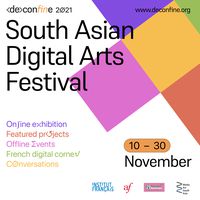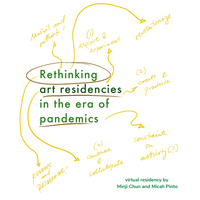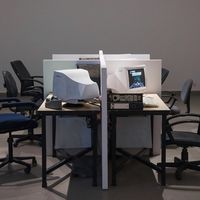<de>confine 2021 | Interview with Media Art South Asia
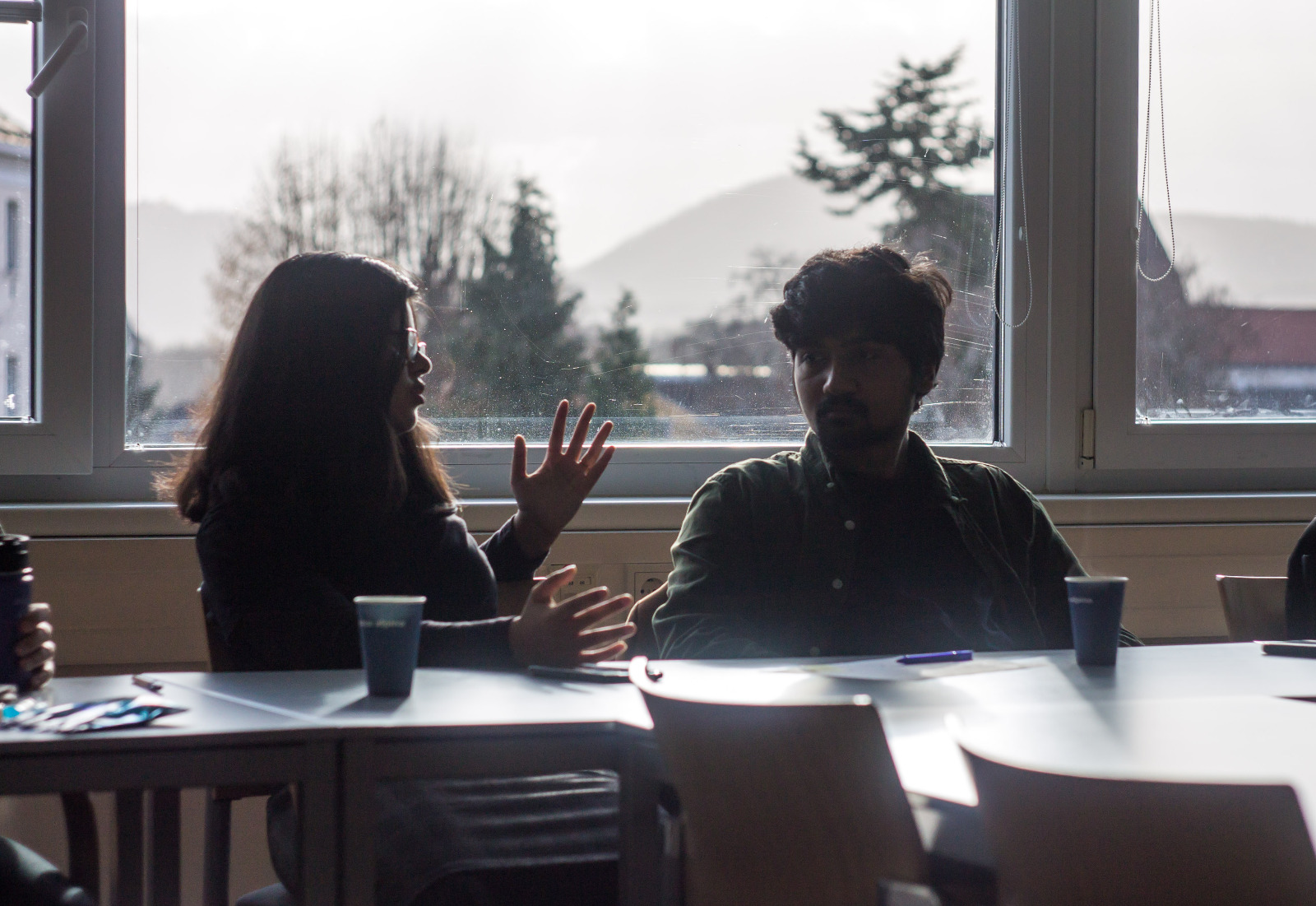
<de>confine 2021, was a South Asian Digital Arts Festival that ran from the 10th to 30th of November 2021 across South Asia and online. Curated by Media Art South Asia, <de>confine sought to draw attention to the rich and dynamic digital arts scene within South Asia. The artists and creators featured in the festival utilised video, audio, A.I. imaging, augmented reality, virtual reality and text to represent a diverse body of work that reflected the rapid proliferation of digital culture in South Asia and around the world.
As part of the media partnership with Media Art South Asia, we have interviewed Khayal Trivedi and Proiti Seal Acharya, curators for <de>confine 2021. In this interview, they share with us their experience working on the festival, paying special attention to the challenges they had encountered.
- Please share with us the general experiences of working on <de>confine in a hybrid format. What were the challenges you faced with regards to the pandemic, and how were they overcome?
The digital mode, necessitated by the pandemic, has created new avenues of collaboration and innovation. The virtual format permits us to connect, create, discuss, explore and mediate through screens across the world. Particularly in South Asia, where geographical borders limit physical exchanges due to political tensions, the virtual mode allows us to bridge that gap and work with artists and practitioners and hear their stories - which are in fact quite similar to ours (as Indians) with respect to how new media is transforming our societies. This year’s edition in particular was hybrid in nature as we pushed for physical interventions where it was possible. This hybridity was exciting to work with, especially as we come out of our respective confinements.
There were several challenges that we faced in this mode of functioning, in the wake of the pandemic. Due to the uncertainty of the situation, we decided to opt for a primarily virtual festival and decentralised our approach towards curation - which meant that physical interventions could take place only if the situation allowed. We had to make space for that flexibility. We were grateful to have the financial support from the French Institute in India and French Institute in Paris, along with other partner networks in South Asian countries such as the French Embassy in Pakistan, Sri Lanka and Alliance Francaise de Dhaka and Katmandou.
Another major challenge was dealing with the shorter attention span of audiences online and breaking the conventional template-driven interface. While the former is still a challenge, we were able to address the latter issue with the help of two interface and website designers who conceptualised the unique interface of <de>confine 2021, which we are extremely happy with. They are Yatharth and Kasjmier Leela.
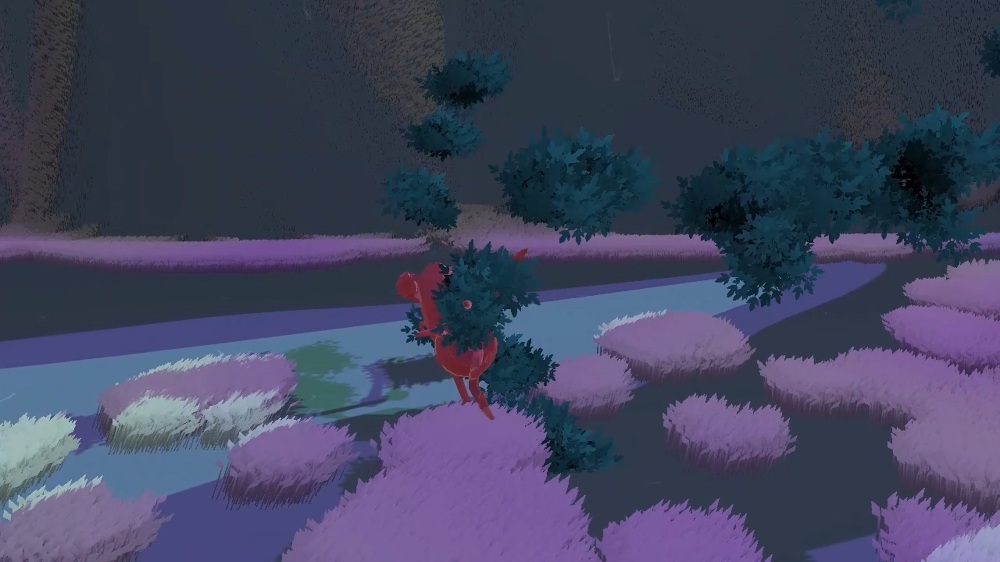
Shrota by Sahej Rahal
-
Given <de>confine’s emphasis on drawing attention to the dynamic digital arts scene in the Indian subcontinent, do you feel the hybrid format possibly reduces barriers to participation and consumption of contemporary art?
Definitely. The hybrid format, by which we mean having physical interventions alongside virtual activities, helped us reach wider audiences and bridge the gaps created by the political alienation between the countries in South Asia. One such example was the AR painting exhibition by Beatrice de Fays in Hyderabad, which was simultaneously exhibited on the festival website for audiences to experience online. Such intervention makes the works accessible to a much wider audience.
-
What are some key takeaways from your experience of curating for <de>confine 2021?
With a festival of this scale, there are several takeaways. A major lesson was understanding the importance of the politics of the interface and the need to counter the increasing dominance of a few digital corporations that shape our interaction with the web. We also got to experience networked co-curation, i.e., working with artists, web developers, designers, as well as the algorithms behind the platforms that make the web, and then to curate a festival within that space.
The return to physical spaces is a must. Despite having some great digital infrastructures and services at our disposal, we want to position deconfine as a hybrid exhibition - connected to the web and yet grounded in a physical space. The pandemic surely facilitated experimentation in the virtual space, but that does not erase the need for physical interventions.

Planchette Bot by Budhaditya Chattopadhyay
-
Any advice for aspiring artists or artists trying to establish themselves during these times of crisis?
Having curated two online arts festivals since the pandemic began, we’ve definitely developed our own perspectives about what it is like to work within the arts sector at a time of crisis. We can share some of the lessons we have learnt:
Reflect on the nature of the times we are living in. These are times of great transformation, ranging from climate change, to the digitisation of our societies, or the health and disease situation. In times like these, it is important to be conscious and aware of what’s going on around us, and let it seep into our work.
Another point to keep in mind for artists experimenting with digital or new media is that like any other mediums, these too have their own nature. To use these tools or mediums effectively, one needs to understand their politics and structures. Digital media and digital modes of engagement are here to stay, so we need to know and learn as much as we can about what sets this apart from other mediums.
The virtual format also permits creative practitioners to connect with others across the world. There is an unprecedented level of access and exposure that this format facilitates. It is vital to leverage these possibilities to enrich one’s practice, and also to document one’s practice in web-accessible and shareable formats.
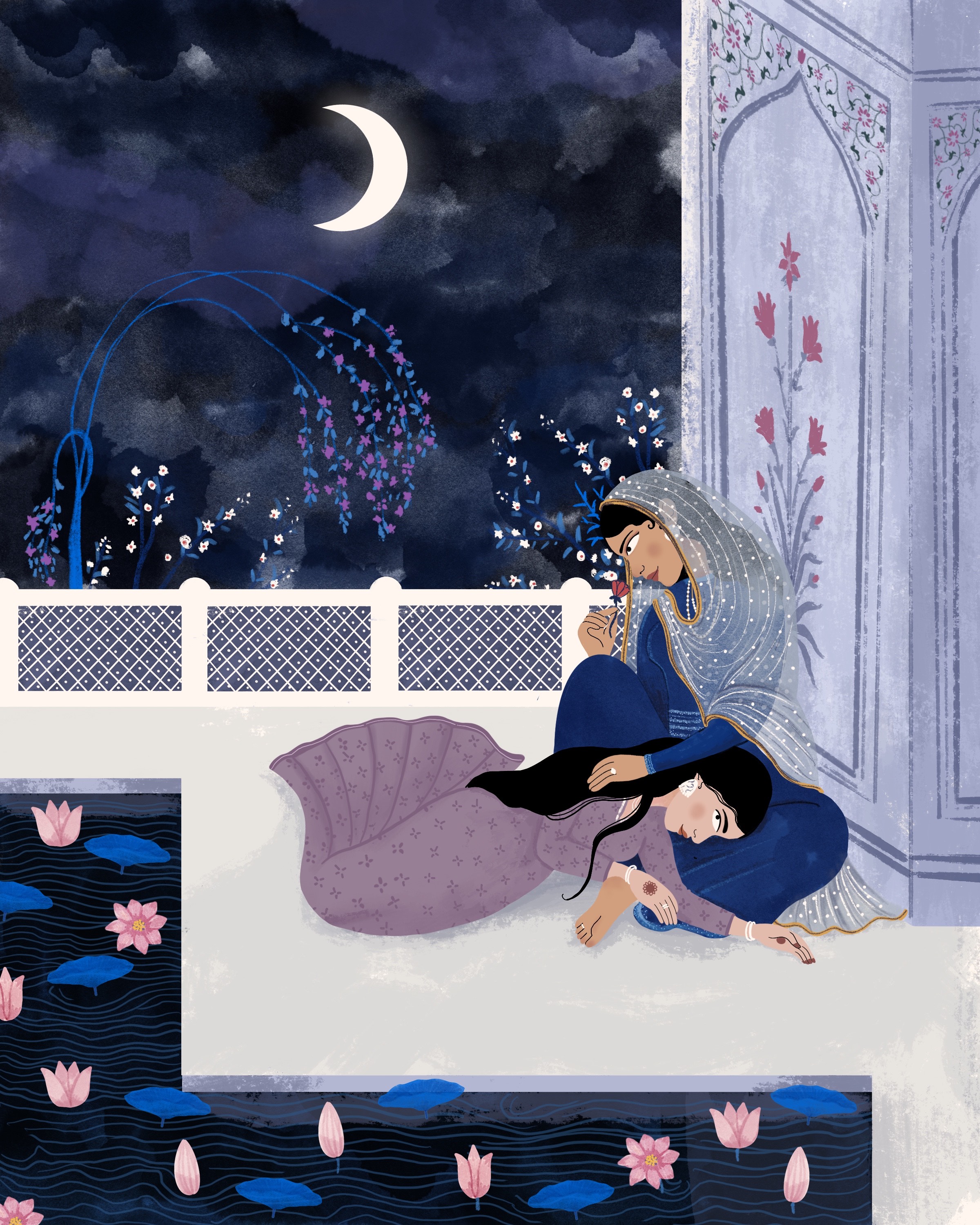
Moon Song by Reya Ahmed
-
How do you think the COVID-19 crisis has possibly shaped or revamped the contemporary cultural landscape of the Indian Subcontinent and beyond?
It has certainly drawn a lot of attention to digital art and net art in general. Artists were forced to adapt to new mediums - many translated their existing works to the digital mode or created new works. NFT markets have been boosted. Art institutions also were forced to use the virtual medium as spaces for exhibition, display and engagement. On one side, this has pushed experiments with the digital space but on the other side, we also observe a lot of institutions and artists treating art as “content” and producing this content in forms and languages pre-decided by various templates and determined by the structures of digital platforms. It is important to not fall into this trap.
With the continuation of the pandemic, there is so much happening virtually. We hope that despite this “new normal”, physical events resume with equal enthusiasm as and when conditions permit.
Similar content
from - to
10 Nov 2021 - 30 Nov 2021
17 Sep 2021
deadline
15 Aug 2021
14 Jan 2021

